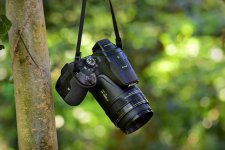Photography is an art that beautifully captures moments frozen in time. Behind every stunning photograph lies a multitude of factors, including composition, lighting, and exposure. One crucial element that can make or break an image is the shutter speed setting. Understanding and harnessing the power of shutter speed allows photographers to explore a whole new realm of creativity. In this blog, we will delve into the fascinating world of shutter speed and provide insights on how to make the most of this essential setting.

- What is Shutter Speed?Shutter speed refers to the length of time that the camera's shutter remains open, exposing the camera sensor to light. It determines how motion is captured in a photograph, whether freezing fast action or creating captivating motion blur. Shutter speed is typically measured in fractions of a second, such as 1/1000s, 1/250s, or 1/30s.
- Freezing Fast Action:A fast shutter speed is ideal for capturing subjects in motion with incredible clarity. Whether it's a speeding car, a flying bird, or a sports event, freezing the action requires a quick shutter speed. Experiment with settings like 1/500s or higher to ensure the subject remains sharp and devoid of motion blur.
- Creating Motion Blur:On the other end of the spectrum, slower shutter speeds allow for the capture of motion blur. This technique adds a sense of dynamism and artistic flair to your photographs. Common applications include capturing the smooth flow of waterfalls, light trails in cityscapes, or intentional camera panning during sports events. Start with shutter speeds around 1/30s or slower to achieve the desired effect.
- Controlling Exposure:Shutter speed significantly influences exposure, which refers to the overall brightness or darkness of an image. When shooting in low-light conditions, a longer shutter speed can compensate for limited available light, allowing more light to reach the sensor. However, be cautious, as longer exposures may introduce camera shake, requiring the use of a tripod or other stabilizing tools.
- Creative Time-Lapse and Long Exposures
hotography is a medium that allows us to visualize the passage of time. Long exposures and time-lapse photography open up doors to breathtaking visual experiences. By using extremely slow shutter speeds, you can capture star trails, mesmerizing light paintings, or the serene movement of clouds. Experimentation and patience are key in achieving stunning results in this genre.
- Balancing Shutter Speed with Other Settings:Shutter speed is just one element of the exposure triangle, which includes aperture and ISO. Understanding how these settings interact with each other is crucial for achieving optimal results. Faster shutter speeds may require larger apertures (lower f-stop numbers) or higher ISO settings to maintain proper exposure. Finding the right balance among these settings is essential for achieving the desired outcome.
- Additional Tips and Techniques:a. Use the camera's burst mode when photographing fast-paced action to increase your chances of capturing the perfect moment.b. Experiment with panning techniques to create a sharp subject against a blurred background, emphasizing motion.c. Employ neutral density (ND) filters to reduce the amount of light entering the lens, allowing for longer exposures even in bright conditions.
